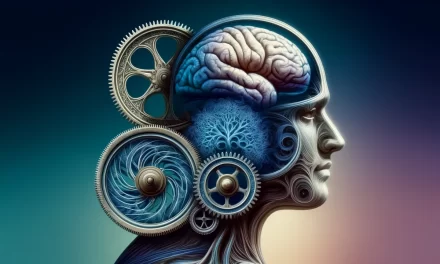Introduction to NLP and Its Relevance to Inner Peace
Neuro-Linguistic Programming (NLP) might sound like a complex term, but its relevance to our daily lives, especially in achieving inner peace, is profound and deeply accessible. NLP, at its core, is a psychological approach that involves analyzing strategies used by successful individuals and applying them to reach a personal goal. It relates to the way we communicate with ourselves and others, and how that affects our behavior.
For many of us, inner peace seems like a distant goal, often clouded by the stress and hustle of daily life. Whether you’re a student grappling with academic pressures, a doctor facing daily life-and-death decisions, or a housewife juggling myriad responsibilities, the quest for mental calm and clarity is universal. Here’s where NLP bridges the gap. It offers tools and techniques to reframe our thought patterns, enabling us to manage stress and anxiety more effectively.
But how does this tie into mindfulness and meditation? Mindfulness is a practice of being fully present in the moment, aware of where we are and what we’re doing, without being overly reactive or overwhelmed by what’s going on around us. Meditation, a key component of mindfulness, involves techniques like focusing on your breath or a particular thought or object to train attention and awareness, achieving mental clarity and emotional calm.
Integrating NLP with mindfulness and meditation creates a powerful synergy. NLP techniques, with their focus on changing negative thought patterns and enhancing self-awareness, complement the practice of mindfulness. This combination not only helps in achieving inner peace but also empowers us to handle life’s challenges more effectively.
As we delve deeper into this topic, we will explore how you can harness the principles of NLP to enhance your mindfulness and meditation practices. Whether you’re a complete novice or a seasoned practitioner looking to add another layer to your routine, this journey promises to be enlightening and transformative, paving the way to a more peaceful and centered you.
Understanding Mindfulness and Meditation
Mindfulness and meditation are often mentioned together, but they hold distinct meanings and benefits. At its essence, mindfulness is the practice of being completely present and engaged in the moment, aware of our thoughts and feelings without distraction or judgment. It’s about noticing the world around you, the sensations in your body, and the movement of your thoughts. This practice encourages an increased awareness of the present, fostering a sense of peace and clarity in our day-to-day lives.
Meditation, often used as a tool within mindfulness, is an intentional practice where one focuses the mind on a particular object, thought, or activity to train attention and awareness, and achieve mental clarity and emotional calmness. It’s like exercise for your mind, strengthening your ability to concentrate and relax.
Incorporating mindfulness and meditation into your daily routine can have profound effects on your overall well-being. Studies have shown that regular practice can reduce stress, improve focus, and contribute to a greater sense of balance and peace in life. For professionals like coaches or therapists, who often deal with high-stress environments, these practices can be particularly beneficial in managing personal stress levels while also providing tools to assist their clients more effectively.
As we explore the integration of these practices with NLP, we’ll discover how they can become even more powerful in achieving inner peace and improving mental health.
The Basics of NLP: A Guide for Beginners
Neuro-Linguistic Programming (NLP) can appear daunting at first, but its fundamentals are rooted in concepts that are both intuitive and applicable to everyday life. NLP is essentially a user manual for the mind, offering insights into how we can change our thoughts and emotions to achieve desired outcomes. For beginners, understanding NLP starts with grasping its three core components: Neurology, Language, and Programming.
Neurology refers to how our body and brain function, Language denotes how we use language and how it affects us, and Programming is about our patterns of thought, feeling, and behavior. NLP explores the interplay between these elements and provides strategies to modify them for improved mental and emotional well-being.
A central tenet of NLP is that our mental maps of the world do not cover the actual world itself but rather our perception of it. This means that by changing our perceptions, we can effectively change our experience of the world. For instance, a teacher who perceives a challenging class as an opportunity for growth rather than a stressful obstacle will likely approach the situation with more positivity and effectiveness.
NLP techniques are diverse but often involve aspects like visualization, reframing thoughts, and setting well-defined goals. Visualization involves mentally picturing a positive outcome or process, which can be a powerful motivator and stress reliever. Reframing is about changing how we perceive an event or situation to alter its meaning and impact on us. For example, viewing a failed business venture not as a loss, but as a learning experience, can significantly change one’s approach to future endeavors.
For beginners, especially those in professions like coaching or counseling, NLP offers practical tools to not only improve personal life but also to enhance the effectiveness of their work. Coaches can use NLP techniques to help clients overcome mental barriers, while counselors can apply these strategies to assist clients in reframing negative thoughts.
As we dive deeper into the application of NLP, remember that the journey is about exploring and understanding the unique workings of your mind, and using that knowledge to cultivate a more fulfilling and peaceful life.
NLP Techniques for Enhancing Mindfulness
Incorporating Neuro-Linguistic Programming (NLP) techniques into mindfulness practices can significantly enhance their effectiveness. NLP offers tools to refine our thought processes and emotional responses, making mindfulness more accessible and impactful. Here are some key NLP techniques that can amplify mindfulness practices:
Anchoring for Mindful States: Anchoring involves creating a sensory association with a particular state of mind. For instance, a coach or therapist might encourage a client to touch their thumb and forefinger together while feeling particularly relaxed or centered. Over time, this action becomes an ‘anchor’ that can trigger relaxation when repeated. Individuals can use anchoring to swiftly return to a state of mindfulness during stressful moments, enhancing their ability to remain calm and focused.
Reframing Thoughts: Mindfulness is often about observing thoughts without judgment. NLP takes this further by teaching how to actively reframe negative thoughts. For example, if you’re feeling overwhelmed by a task, instead of thinking, “This is impossible,” you might reframe it to, “This is challenging, but I have the skills to tackle it.” This shift in perspective can reduce anxiety and improve focus, making mindfulness more effective.
Visualization for Clarity and Focus: Visualization is a powerful NLP technique where you mentally rehearse a desired outcome or process. In the context of mindfulness, visualization can be used to envision oneself engaging in mindful practices successfully. For professionals like businessmen or students, visualizing a calm and focused state before a big meeting or exam can be immensely beneficial.
Meta Model Questions for Self-Awareness: The NLP Meta Model is a set of questions designed to clarify, challenge, and expand the limits of one’s thinking. Applying these questions during mindfulness meditation can deepen self-awareness and uncover hidden beliefs and values. For example, asking oneself, “What specifically am I feeling right now?” can bring clarity to emotions and thoughts, enhancing the mindfulness experience.
Using Timelines for Emotional Management: NLP timelines involve imagining a line that represents time – your past, present, and future. By mentally placing an unpleasant experience on this timeline and adjusting its distance or size, you can change its emotional impact. This technique can be integrated into mindfulness practices to manage feelings like anxiety or regret, helping individuals stay grounded in the present moment.
These NLP techniques, when woven into mindfulness and meditation practices, offer a robust framework for achieving greater mental clarity, emotional balance, and overall well-being. Whether you’re a coach guiding clients, a teacher managing classroom stress, or a housewife seeking inner peace amidst daily chaos, these tools provide practical and transformative ways to enhance your mindfulness journey.
Meditation through NLP for Different Life Roles
Neuro-Linguistic Programming (NLP) offers versatile techniques that can be tailored to suit the unique challenges and lifestyles of different individuals. By integrating NLP with meditation, people from various walks of life can find more effective ways to achieve inner peace and handle their daily stressors.
For Students and Teachers: The academic world is rife with pressures and deadlines. Students can use NLP to enhance concentration and memory retention, which are crucial for learning. Techniques like visualization can help them mentally prepare for exams or presentations, reducing anxiety. Teachers, on the other hand, can use NLP to develop greater empathy and understanding, allowing them to connect with students on a deeper level. Meditation practices focused on breathwork can help both students and teachers stay calm and centered in the classroom.
For Healthcare Professionals: Doctors, nurses, and therapists often face high-stress environments and emotionally challenging situations. NLP can aid in managing emotional exhaustion. For example, using reframing techniques, a doctor can view difficult cases not as stressors but as opportunities to make a significant impact. Mindful meditation can be a daily practice to detach from work-related stress, maintain compassion, and prevent burnout.
For Business Professionals: In the fast-paced corporate world, decision-making and leadership are key. Business professionals can use NLP to improve communication skills and build rapport with clients and teams. Mindfulness meditation can be a tool for these professionals to maintain clarity under pressure and foster a balanced approach to work and life.
For Coaches and Counselors: These professionals can benefit immensely from NLP by developing enhanced listening and questioning skills to better understand and support their clients. Integrating mindfulness in their practice helps maintain a non-judgmental and present-centered approach, crucial for effective counseling and coaching.
For Home Makers: Managing a home and family requires multitasking and patience. NLP techniques like anchoring can help homemakers trigger a state of calm amidst chaos. Mindfulness practices, even if it’s just for a few minutes a day, can provide a much-needed break and mental reset, enabling them to handle their responsibilities with more ease and less stress.
For Entrepreneurs: Entrepreneurs often deal with uncertainty and risk. NLP can help in setting clear goals and overcoming fears and limiting beliefs. Mindful meditation can be a grounding practice, helping maintain focus and resilience in the face of challenges.
Incorporating NLP into meditation practices provides a personalized approach to mental wellness, allowing individuals in any role to find balance, enhance their performance, and navigate life’s challenges with greater ease and clarity.
Case Studies: Transformations with NLP and Meditation
The power of combining NLP and meditation is best illustrated through real-life transformations. Here are two brief case studies that highlight their impact:
Sarah, the Stressed Executive: Sarah, a high-level corporate executive, struggled with severe stress and anxiety. Her hectic schedule left her constantly on edge, affecting her productivity and personal life. After incorporating NLP techniques, particularly reframing and anchoring, into her daily meditation practice, Sarah experienced a profound shift. She learned to reframe her challenges as opportunities, using a specific anchoring gesture to induce calmness during high-stress moments. Over time, Sarah reported improved focus, better decision-making, and a significant reduction in her anxiety levels, leading to enhanced work performance and a more balanced life.
David, the Overwhelmed Student: David, a university student, faced immense academic pressure, leading to poor concentration and performance anxiety. He began a routine of mindfulness meditation, supplemented with NLP visualization techniques. Each day, David visualized successfully understanding and applying his study material, which gradually improved his focus and confidence. This combination of mindfulness and NLP not only helped him excel academically but also reduced his anxiety, allowing him to enjoy a more fulfilling university experience.
These cases demonstrate how NLP, when merged with meditation, can create transformative experiences, enabling individuals to manage stress, improve focus, and achieve a greater sense of inner peace and well-being.
Practical Tips for Daily Practice
Incorporating NLP and meditation into your daily routine doesn’t have to be time-consuming or complex. Here are some practical tips to seamlessly integrate these practices into your life:
Start Small: Begin with just 5-10 minutes of meditation a day. Choose a quiet time and space where you won’t be disturbed. Focus on your breath or use a simple guided meditation to get started.
Use NLP Anchors: Select a physical anchor (like touching your thumb and forefinger together) and use it during moments of calm and relaxation. With repetition, this gesture will become a trigger for inducing a calm state, useful in stressful situations.
Mindful Moments: Find opportunities for mindfulness in everyday activities. This could be while drinking a cup of tea, walking, or even during mundane tasks like washing dishes. Pay full attention to the sensations and experiences of the moment.
Set Clear Intentions: Use NLP goal-setting techniques to define what you want to achieve with your practice. Be specific about your intentions, whether it’s to reduce stress, improve focus, or develop empathy.
Reflect and Journal: Spend a few minutes each day writing down your thoughts and feelings. This reflection can help track your progress and provide insights into your mental and emotional states.
By making these practices a part of your daily life, you’ll gradually notice a shift in your mental clarity, emotional resilience, and overall sense of well-being. Remember, consistency is key – even small, regular practices can lead to significant changes over time.
Conclusion: Embracing a Mindful Journey with NLP
As we’ve explored, the fusion of NLP and mindfulness meditation offers a powerful pathway to inner peace and enhanced well-being. These practices, accessible to everyone from students to professionals, provide practical tools for managing stress, improving focus, and fostering emotional balance. By starting with small steps and consistently applying NLP techniques to your meditation practice, you can embark on a transformative journey towards a more mindful, peaceful life. Remember, the journey of mindfulness with NLP is not just about reaching a destination but about cultivating a lifelong practice that nurtures your mental and emotional health.










